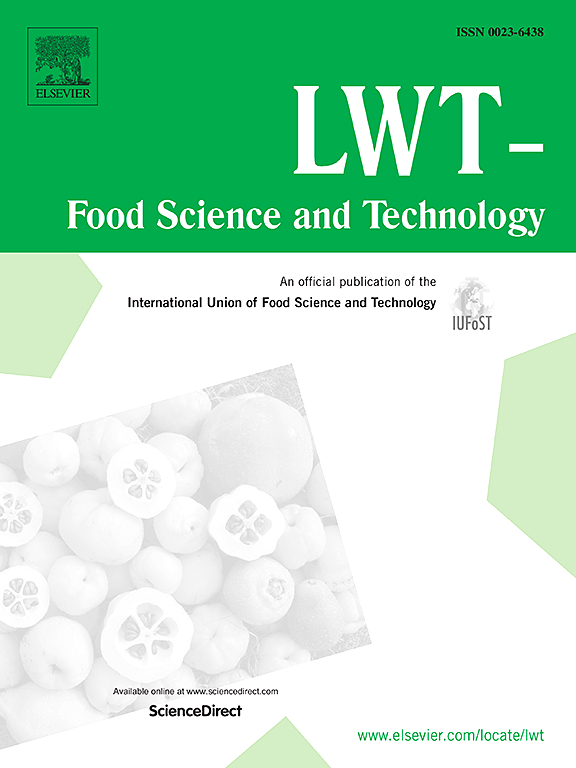Effect of electron beam irradiation treatment on preservation of freshly fava bean (Vicia faba L.) in modified atmosphere packaging
IF 6
1区 农林科学
Q1 FOOD SCIENCE & TECHNOLOGY
引用次数: 0
Abstract
Freshly fava beans (Vicia faba L.) are highly valued for their exceptional nutritional content, yet their market potential is limited due to a relatively short shelf life, primarily caused by high respiration rates. This study aims to probe the potential of electron beam irradiation in conjunction with modified atmosphere packaging as a method to elongate the shelf life of freshly fava beans. Following a period of trial and selection, the sample was ultimately irradiation with 2.0 kGy and stored in 0.03 mm PE MA packaging bag. Subsequently, the storage quality was evaluated at four-day intervals at 4 ± 1 °C until the 20th day. The utilization of 2.0 kGy in the MAP system resulted in elevated levels of nutrients and antioxidants, concomitant with a reduction in the levels of deleterious substances, such as malondialdehyde (MDA). Furthermore, the 2.0 kGy treatment has been proven to bolster the capacity of 2,2-Diphenyl-1-picrylhydrazyl (DPPH) and 2,2′-Azinobis- (3-ethylbenzthiazoline-6- sulphonate) (ABTS+) free radical scavenging, as well as the activities of peroxidase (POD), phenylalamine ammonia lyase (PAL), catalase (CAT) and superoxide dismutase (SOD). Concurrently, it has been validated to decline lipoxygenase (LOX) and polyphenol oxidase (PPO) activities, while sustaining the structural integrity of the samples during storage. The findings suggest that the integration of EBI and MAP could be an efficacious method for preserving freshly fava beans.
求助全文
约1分钟内获得全文
求助全文
来源期刊

LWT - Food Science and Technology
工程技术-食品科技
CiteScore
11.80
自引率
6.70%
发文量
1724
审稿时长
65 days
期刊介绍:
LWT - Food Science and Technology is an international journal that publishes innovative papers in the fields of food chemistry, biochemistry, microbiology, technology and nutrition. The work described should be innovative either in the approach or in the methods used. The significance of the results either for the science community or for the food industry must also be specified. Contributions written in English are welcomed in the form of review articles, short reviews, research papers, and research notes. Papers featuring animal trials and cell cultures are outside the scope of the journal and will not be considered for publication.
 求助内容:
求助内容: 应助结果提醒方式:
应助结果提醒方式:


